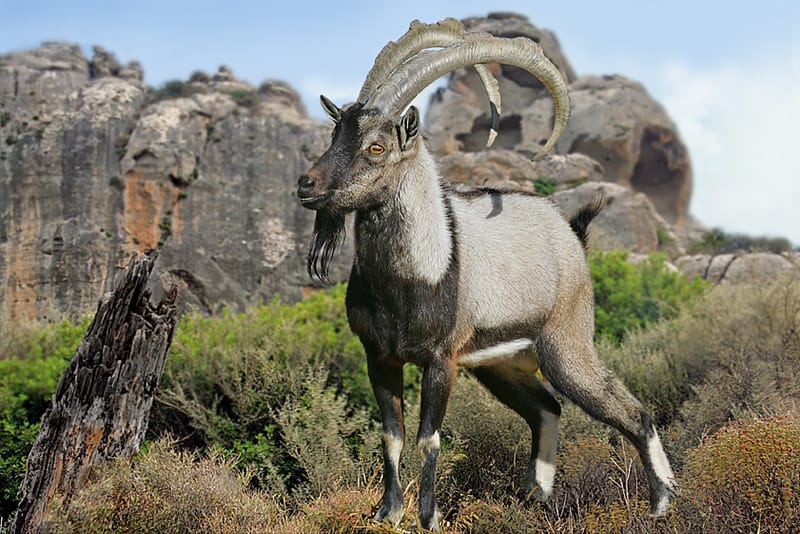Greece accounted for 25% of the EU’s goat population according to the latest data from Eurostat, while Denmark accounted for 9% of the pig population, the Netherlands a further 8%.
Meanwhile Ireland accounted for 9% of the EU’s bovine population, and Romania accounted for 17% of the EU’s sheep population.
According to the report, the EU's sizeable livestock includes an estimated 142 million pigs, 76 million bovine animals, 60 million sheep and 11 million goats in December 2021.
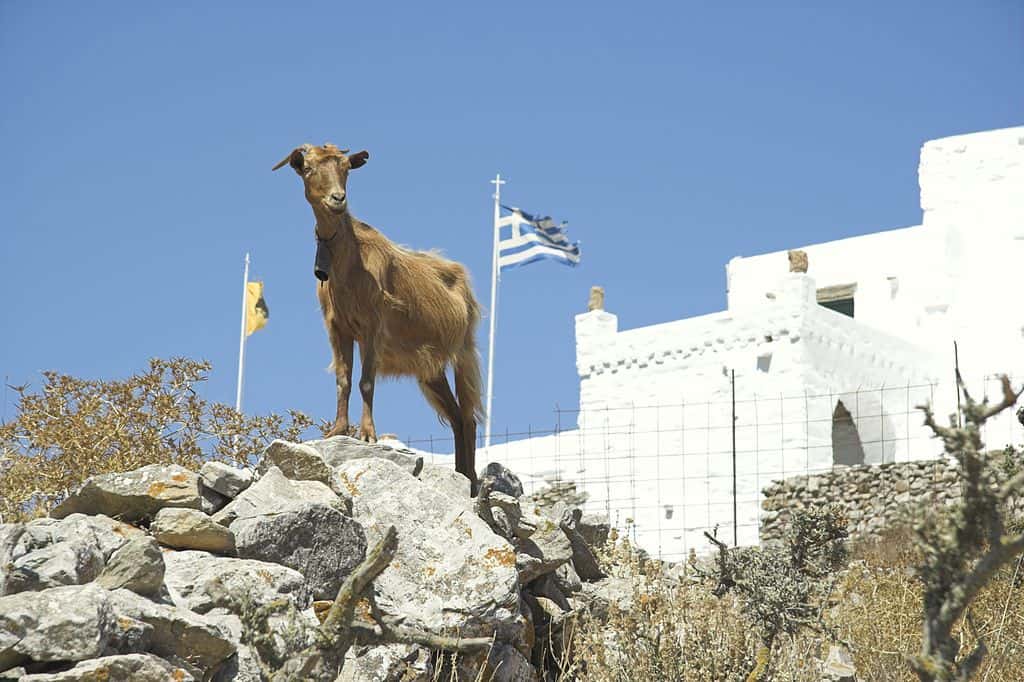
By and large, the bigger Member States reared the most livestock:
Spain accounted for 24% of the EU’s pigs, 9% of the EU’s bovines, 25% of the EU’s sheep and 23% of the EU’s goats.
France accounted for 9% of the EU’s pigs, 23% of the EU’s bovines, 12% of the EU’s sheep and 12% of the EU’s goats.
Germany accounted for 17% of the EU’s pigs and 15% of the EU’s bovines, 3% of the EU’s sheep and 1% of the EU’s goats
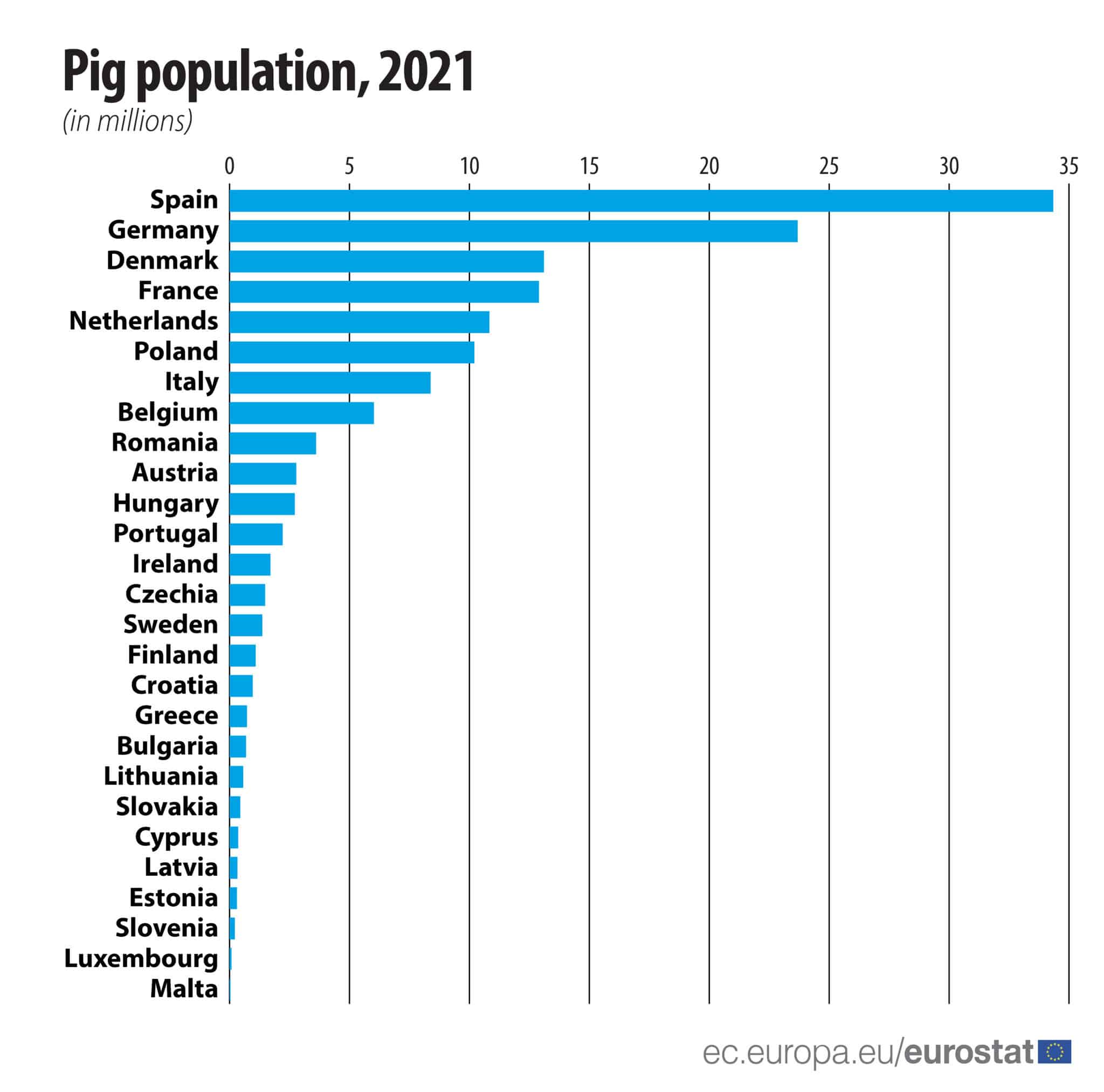
There were some other Member States that were relatively specialised:
- Denmark accounted for 9% of the EU’s pig population and the Netherlands a further 8%.
- Ireland accounted for 9% of the EU’s bovine population.
- Romania accounted for 17% of the EU’s sheep population.
- Greece accounted for 25% of the EU’s goat population.
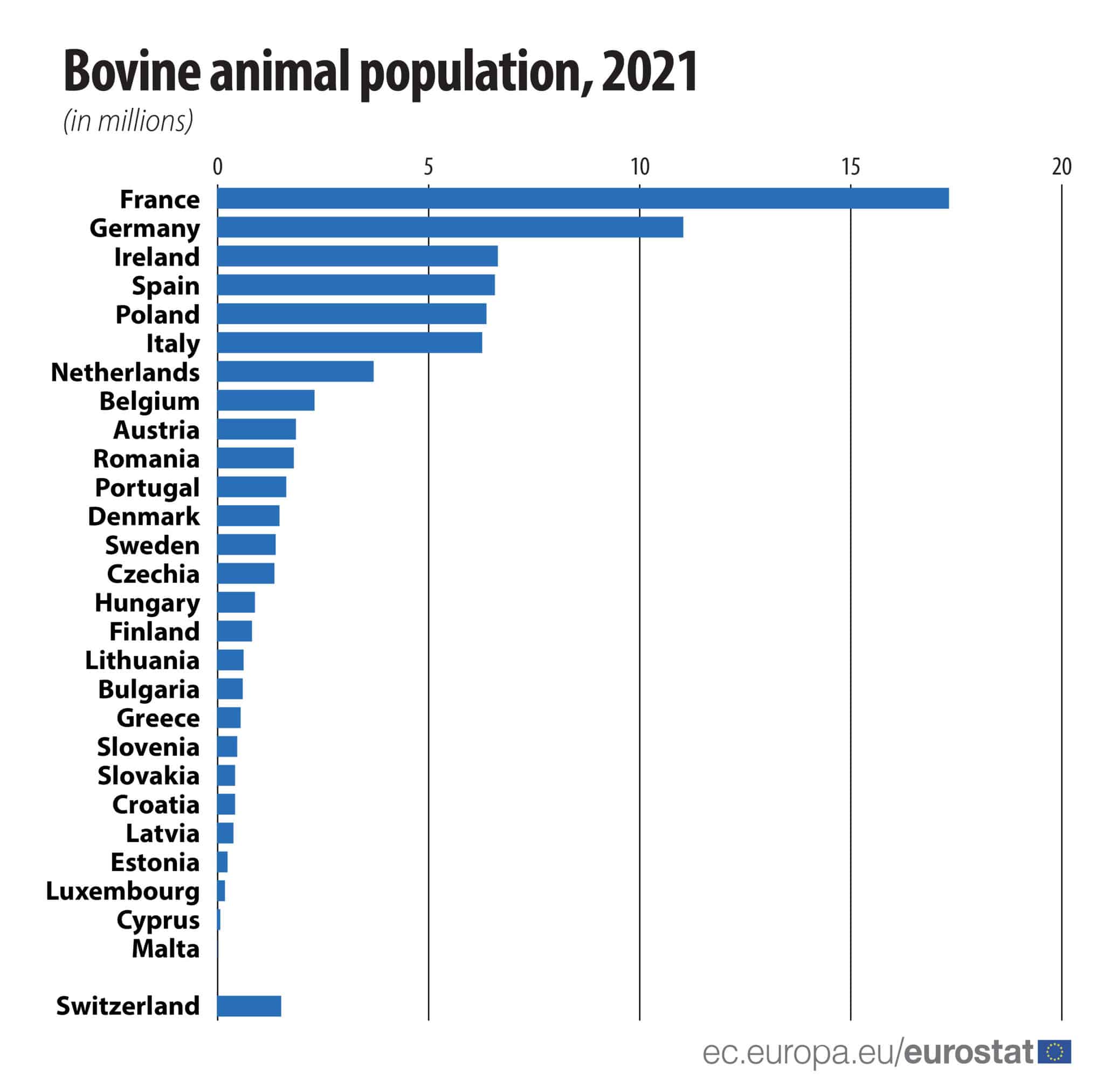
EU livestock population’s evolution over time
Between 2010 and 2021, there have been fluctuations in the population of the four main livestock species. The EU’s pig population reached almost 146 million in 2020 before declining again. However, in 2021, the number of pigs was still 2% higher than in 2010.
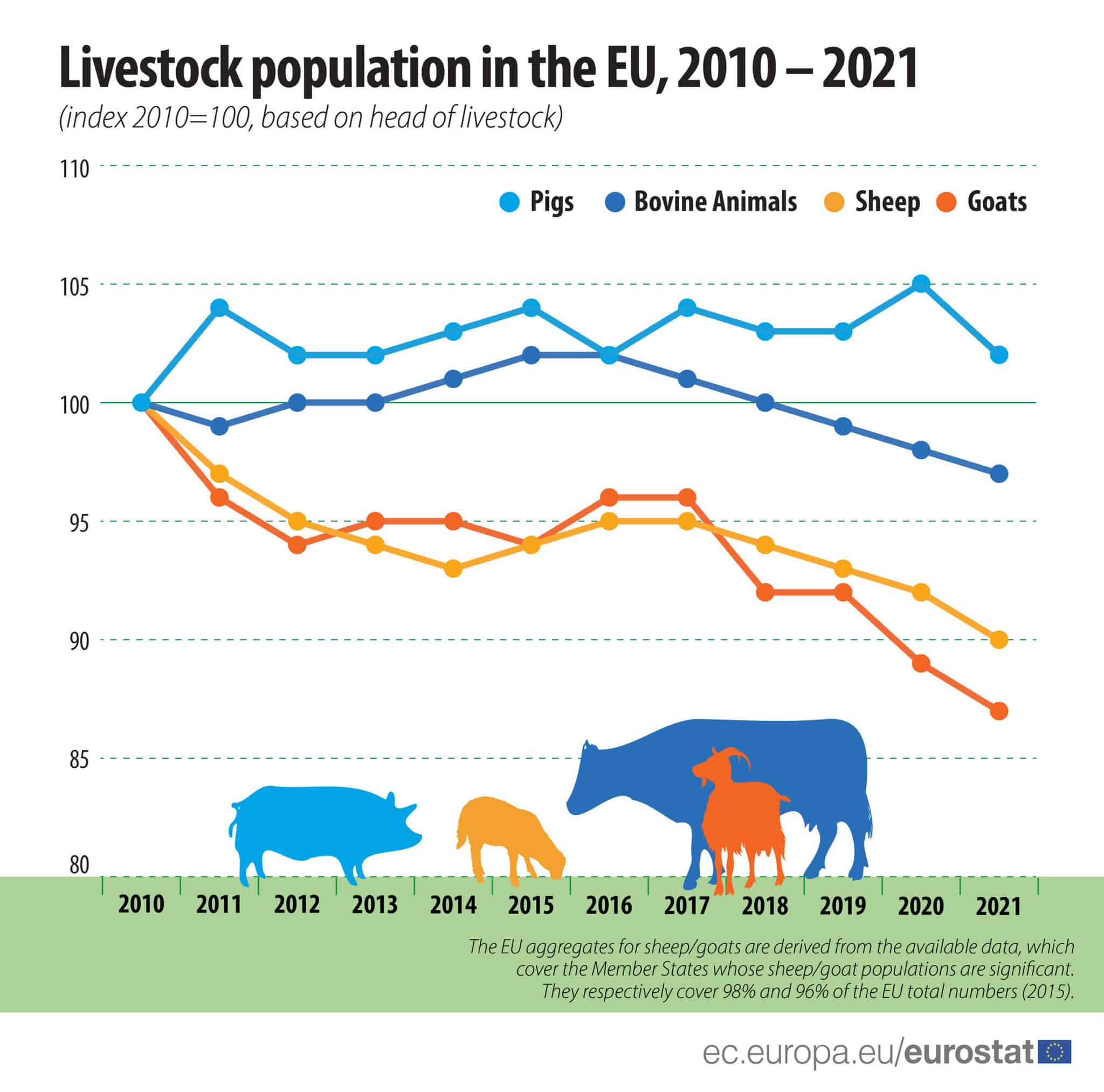
Over the same period, the population of bovine livestock reached nearly 80 million in 2016 (a 2% increase from 2010), before decreasing again over the next three years. In 2021, it was roughly 3% lower than in 2010.
The population of sheep and goats sustained a downward trend between 2010 and 2021, falling by 10% and 13% respectively in 2021 compared with 2010.
[Eurostat]
